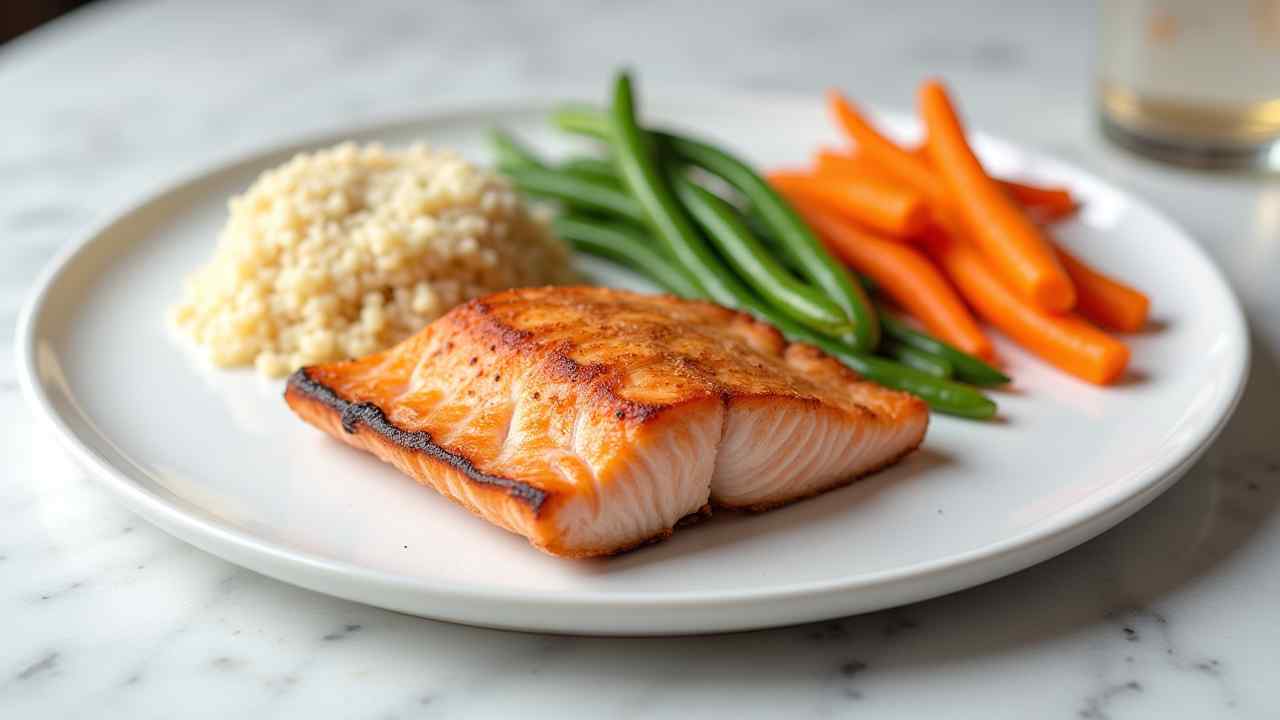
🥣 5 Soothing Low-FODMAP Diet Recipes (For the Elimination Phase)
🥣 Soothing Low-FODMAP Diet Recipes (A Guide for the Elimination Phase) 🥣
❗ Important Medical Advisory: The low-FODMAP diet is a complex diagnostic tool used to manage IBS. It must be done under the supervision of a doctor or a registered dietitian trained in the protocol. This guide provides general recipe ideas and is not a substitute for professional medical advice.
If you suffer from Irritable Bowel Syndrome (IBS), you know how challenging it can be. Symptoms like bloating, gas, and pain can be disruptive. The low-FODMAP diet is a scientifically proven way to find relief. It helps you identify which foods are triggering your symptoms.
This diet can seem very restrictive at first. Having some simple meal ideas can make it much easier. This guide offers gentle and delicious low-FODMAP diet recipes. They are perfect for the initial elimination phase. Let's get cooking! ✅
🤔 What Are the 3 Phases of the Low-FODMAP Diet?
The low-FODMAP diet is not a forever diet. It is a learning process with three distinct stages. The goal is to find your personal triggers. This allows you to create a sustainable long-term eating plan.
1. Elimination: In this first phase, you remove all high-FODMAP foods. This typically lasts for 2 to 6 weeks. It allows your gut to calm down and your symptoms to resolve.
2. Reintroduction: Once you feel better, you systematically reintroduce foods. This is done one at a time. It helps you test your tolerance for specific FODMAP groups.
3. Personalization: In the final phase, you use your results to create a personalized diet. You will only need to avoid the specific foods that you reacted to. This is your long-term, modified diet.
☀️ What Are Some Simple Low-FODMAP Breakfast Recipes?
Breakfast can be tricky, as many cereals and breads are high in FODMAPs. These ideas are simple, safe, and delicious for the elimination phase of your low-FODMAP diet recipes plan.
- Oatmeal with Berries: Cook a 1/2 cup serving of rolled oats with water or lactose-free milk. Top with a small handful of low-FODMAP berries like strawberries or blueberries.
- Scrambled Eggs with Spinach: Eggs are naturally FODMAP-free. Scramble two eggs with a handful of spinach. Serve with a slice of gluten-free or true sourdough toast. 🍳
🥗 What Are Some Easy Low-FODMAP Lunch & Dinner Recipes?
These recipes avoid common triggers like onion, garlic, and wheat. They are simple, flavorful, and gentle on your digestive system. They are perfect for your elimination phase.
How to Make Lemon Herb Chicken with Roasted Carrots?
This is a simple and comforting meal. Take a chicken breast and season it with salt, pepper, dried rosemary, and a squeeze of lemon juice. Bake it in the oven. Serve with a side of roasted carrots and a small baked potato.
How to Make Pan-Seared Salmon with Quinoa?
Salmon is a fantastic low-FODMAP choice. Pan-sear a salmon fillet in a little oil. Serve it over a bed of cooked quinoa. Add a side of sautéed zucchini. Use garlic-infused oil for flavor, not actual garlic.
What is a "Tummy-Friendly" Stir-Fry?
You can still enjoy a stir-fry. Sauté sliced chicken or shrimp. Add low-FODMAP vegetables like carrots, bell peppers, and the green parts of scallions. For a sauce, use tamari (gluten-free soy sauce), fresh ginger, and a little maple syrup.
💡 What Are the Key Ingredient Swaps for Low-FODMAP Cooking?
Cooking without onion and garlic seems impossible. But there are simple swaps that make your low-FODMAP diet recipes delicious. Here are the most important tricks.
For onion and garlic flavor, use infused oils. The FODMAPs in them are not oil-soluble. This means the oil gets the flavor, but not the irritants. You can also use the green tops of scallions and chives.
For wheat, choose gluten-free products. Rice, quinoa, and certified gluten-free oats are your friends. For dairy, use lactose-free milk and yogurt. Hard cheeses are also naturally low in lactose and generally safe. 🧀
Remember, the goal of this diet is to eventually add more foods back in. Working with a dietitian is the best way to do this safely and effectively. They can guide you on your journey to better digestive health. 🩺